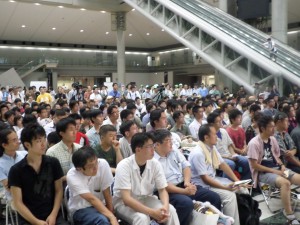
Last weekend, CBLDF Executive Director Charles Brownstein traveled to Tokyo for the Manga Freedom Speaking Tour, a series of presentations and meetings about free expression issues facing manga and how fans in the United States and Japan can band together to protect the rights of the medium and its readers. Below is the full text of his August 11 address to a rapt, standing room only crowd at Comic Market, the world’s largest exhibition of comics. Grateful acknowledgment is made to Dan Kanemitsu, who served as Brownstein’s translator at his speaking engagements.
Good afternoon.
Thank you so much for your kind attention, coming out after such a busy and exciting day of creativity, friendship, and artistic passion. On behalf of the community of CBLDF, we are very happy to be here in Tokyo with you and humbled that so many are braving the heat and fatigue to be here this afternoon.
We would like to express our sincere thanks to our hosts, the Comic Market committee, Comitia, the Institute for Contents Culture, and the Uguisu Ribbon Campaign. Tokyo is an amazing place that is like nowhere else in the world, and I am appreciative of how kindly you have welcomed me to your home city. Thank you.
On behalf of CBLDF, we would also like to thank the 3,000 volunteers who comprise the staff of the Comic Market. I have never seen anything like this event – not in comics, not even in my home city of New York. To create a safe space – physically and intellectually – for a community so large and passionate as the one assembled here is an incredible accomplishment. I express my admiration and gratitude for your extraordinary work.
One of the key values I have learned is that we are all participants of Comic Market, that Comic Market represents a vast community dedicated to the common goal of encouraging manga culture and artistic freedom. At home in the USA, many of us in the manga fan community look up to the Comic Market aspirationally. I can most assuredly say, if fellow fans and artists in the USA could be on this dias with me, and experience what I have in these past two days they would share my longing – if only we could have Comic Market in America. Thank you for making it possible for CBLDF to participate in this outstanding event.
Comics are an essential force in 21st century culture. Wherever you travel in the modern world, you are sure to find comics and comics ideas being enjoyed by the most forward looking members of a culture. When a new volume of One Piece is released in Tokyo, San Francisco, Paris, or elsewhere, you can be certain to see mobs of young people rushing to be the first in their group to devour it. When a new Marvel superhero movie arrives, you will see images inspired by the creativity of men like Jack Kirby, Stan Lee, Steve Ditko, and many others emblazoned onto urban landscapes all over the world. The accessible and powerful creativity that results from the mingling of pictures and words make comics a central aspect of 21st century reading culture.
Manga and manga culture are significant factors in what is making comics so essential. The innovative creativity that originates here in Japan has expanded to inspire and empower generations of fans all over the world.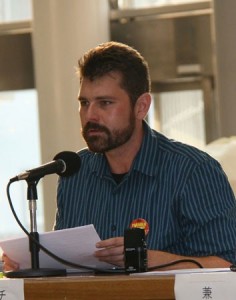
In the United States and Canada, manga culture has exploded to accommodate more than 200 conventions every year, ranging from small local events attracting hundreds to national events attracting tens of thousands. Every weekend, somewhere in North America groups of fans assemble to revel in their love of manga culture. These gatherings are humble in contrast to Comic Market, of course. But they are growing, and like Comic Market, they do represent a sincere community of people from all walks of life who find manga empowering to their lifestyle and creativity.
A generation of North American readers has grown up on manga and anime. Manga can be found in every major bookstore, and anime is a staple on television. Librarians and educators all over North America are responding to the interest of their patrons and making an increased effort to ensure manga is a part of their collections and curriculums. In fact, the interest from teachers and librarians is so great that CBLDF organized and published a handbook about manga to help these audiences achieve a clearer understanding of this important category of art.
So, manga is making great strides. And while the boom that occurred commercially in the early 2000s in the States has subsided somewhat, the appetite for manga in the fan community has not. The fan community continues to grow, more events occur each year, and more people go to those events. See, they are encountering a version of what happened so many years ago at the start of the Comic Market – they are meeting their fellow travelers and forming lasting community bonds around this common passion for art.
The community gives each of the individuals within it strength. Unfortunately, many of those individuals encounter adversity with regard to their passion for manga. For some, it is the feeling of being bullied, excluded, or powerless in the world of school or work that leads them to draw strength and inspiration from manga, and their fellow fans. For others, the consequences are much scarier and comes from the government and the police.
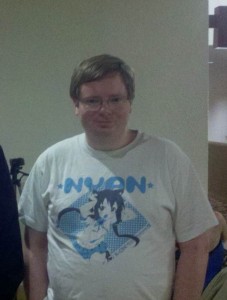 Consider Ryan Matheson, a brave young man who stood up to government authorities because of his loyalty to the ideals of community in manga.
Consider Ryan Matheson, a brave young man who stood up to government authorities because of his loyalty to the ideals of community in manga.
In 2010, Ryan Matheson, a 25 year old American citizen, computer programmer, and manga fan, was unlawfully arrested and abused by authorities in the Canadian Customs agency. He was wrongfully accused of possessing and importing child pornography because of constitutionally protected manga on his laptop – before he was let into the country.
Ryan suffered severe abuse by the authorities. He wasn’t properly informed of the reason for his detention. He was denied access to counsel and the American Embassy. The search of his property was illegal. He suffered cruel & unusual punishment, including being denied food and blankets. Police transporting him to prison actually said “if you get raped in here, it doesn’t count!”
Ryan had no criminal record, and was not in possession of any photographic material. Ryan was released to await trial, but one of the conditions was that he was not allowed to use the Internet outside of work at one specific company. For two years his life was frozen under this false accusation. An accusation that he committed the worst crime in the world – the sexual abuse of children.
The material Ryan was accused of possessing was innocuous. One image “The 48 Positions: Moe Style” is a parody of two famous images. The other was a common doujinshi depicting a fantasy scenario between non-human characters.
For months, Matheson’s ordeal went on. Authorities in Canada were vigorous in their prosecution. The most they were willing to bend was to offer him a plea agreement of 14 days in prison and registering as a sex offender.
The ordeal shook Ryan, indeed as it would any of us. At one point, he actually considered taking the prosecutor’s plea deal simply to put the struggle behind him. He called his mother for guidance. She said if he truly believed that he had done something wrong and that the comics he possessed really were what they accused him of being, then she was okay with him taking the plea.
Ryan said, “Hearing this, I kind of lost it. I decided I wasn’t going to take the plea. Maybe I got a bit reckless, but I told my lawyer, ‘set the trial day.’ I know I could have lost my life – I know I could have gone to jail and had to register as a sex offender if I lost. But I love anime and manga. I was going to fight for it and go to trial.”
CBLDF got involved with aiding Ryan’s defense. We recruited experts to testify about the artistic merit of manga. We also were going to show the fact that the material he was accused of possessing is protected speech in his home country of the US; and that the material is accepted in its origin country of Japan. As a result of Ryan’s strong defense, the Canadian government dropped all charges against Ryan last year. Thanks to Ryan’s courage, and his willingness to stand up for manga, despite the odds against him, a victory was scored for the fight for manga freedom.
W e are working to help restore Ryan by paying off the costs of his legal defense, and are still working to pay off that debt. Ryan’s legal bills cost over $75,000. Thanks to the support of our donors, CBLDF has helped pay for $40,000 of his legal debt and is currently raising money to pay the remaining $24,000.
e are working to help restore Ryan by paying off the costs of his legal defense, and are still working to pay off that debt. Ryan’s legal bills cost over $75,000. Thanks to the support of our donors, CBLDF has helped pay for $40,000 of his legal debt and is currently raising money to pay the remaining $24,000.
After more than a year of working with Ryan on the phone and email, I got to meet him at Anime Detour, a small anime convention in his home city of Minneapolis-St. Paul. He was a shy, smart, brave young man. His passion for manga was a private one, and going to the event he was so amazed to see that there were so many people just like him.
He told me, with great passion, that he was moved to see that whole families were there to experience manga community. He told me he always abstractly knew there were many other people like himself, but he was emotionally moved, changed even, by personally experiencing the community of manga fans that shared his love of this art form.
Spending that time with Ryan taught me, yet again: We are all participants. The fact that all of us are here today at Comic Market, the fact that last month I was one of more than 61,000 members of the community at Anime Expo in Los Angeles, the fact that right now, as we speak to each other, tens of thousands of American fans are gathered at Otakon in Baltimore in the USA and there are gatherings at conventions, in school clubs, and in retail establishments all over the world sharing passion for this art form we love proves that there is a vast global community of manga fandom. And together, we can all be participants in developing true manga freedom.
Right now there is an international wave of moral panic that is attempting to falsely equate sexually explicit art, including manga and anime, with the sexual exploitation and abuse of real children. Ryan was prosecuted under one such law that arose from this panic.
There are many problems with such laws and the prosecution of them. Foremost, governments have a real and compelling interest in preventing and punishing the abuse of real children. No children are harmed in the creation or consumption of artwork. Prosecuting people like Ryan doesn’t lock away real criminals, and it doesn’t protect real children. It creates victims of people who have committed no crime and hurt no person.
Ryan’s case also shows that one of the root causes of prosecution is a misunderstanding of manga and anime as art. Indeed, some customs officials in North America, particularly Canada have come to equate the words manga and anime with porno. As we can see from the material Ryan was prosecuted for, the government agents and prosecutors believed that chibis were actually depictions of 4-year-olds.
Part of CBLDF’s efforts for manga freedom includes increasing appreciation and understanding of manga. We speak not only at conventions, but at universities and legal education meetings to create higher understanding of manga as an art form. We create books like our resource for librarians on manga to improve understanding. One of the keys to achieving manga freedom is overcoming ignorance about manga, and showing that it is so much more than the stereotypes – that it is a vast and thriving form of art that has millions of admirers all over the world. The opportunity to come to Comic Market and to see first hand this amazing community will help us communicate this message even more strongly.
The desire to overcome ignorance and stereotypes about manga is in part why the recent push to regulate manga here in Tokyo is so perplexing to those of us in the West. The bill claims to be “in deference to global trends enhancing the human rights of children,” but does nothing to protect real children from being abused. It instead places an emphasis on cracking down on creative artwork in a way that seems to help reinforce negative stereotypes about anime and manga. Considering the real and serious problems of child sex tourism, child sex abuse, and child pornography, it is hard to comprehend how the expense necessary for the systemic regulation of drawings would result in helping curb the real abuse of real children.
It is also perplexing to see that three editors here in Tokyo were recently arrested for publishing drawings of adult material in a magazine aimed at adult audiences. Every culture has different standards about what level of sexuality is permissible. However, there seems to be a notion that manga should be regulated to better conform to “Western standards.” As a Westerner, I am not certain what standards are being referred to, since the full, uncensored depiction of adult nudity of both genders is common in some of our most popular movies and television shows. Furthermore, many forms of media depicting explicit sexual behavior via photographic means are constitutionally protected in the USA. I’m not saying, and never would say, that the USA is right and the rest of the world isn’t. I am saying that nobody outside of a very specific fringe in the West wants to see a professional in a creative field put in jail for doing the job of making expressive art.
In fact, content restrictive regulation of art tends to disrupt innovation, appreciation, and understanding of an art form as the history of American comic books demonstrates.
Comic books were ubiquitous in the United States starting with their emergence in the 1930s. American comic books began as a diversion for audiences of young children, but as time passed they were growing to entertain teenagers and younger adults.
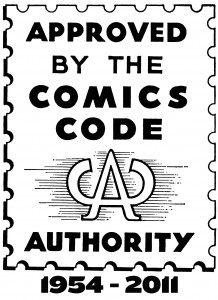 Through the 1940s and early 1950s, comic books in America spoke in a wide range of genres and to a wide range of people, selling in the millions. Unfortunately, a wave of moral panic emerged and gained momentum throughout the 1940s, targeting comic books in various genres including crime, horror, jungle adventure, and others.
Through the 1940s and early 1950s, comic books in America spoke in a wide range of genres and to a wide range of people, selling in the millions. Unfortunately, a wave of moral panic emerged and gained momentum throughout the 1940s, targeting comic books in various genres including crime, horror, jungle adventure, and others.
Critics said that crime comic books would teach children how to become criminals. That the skimpy costumes in Tarzan, Wonder Woman, and other comics would create a generation of sexual deviants. That Batman and Robin would teach young boys to be homosexuals. That the scenes of gore in horror comics would inspire a generation of delinquents.
At the time, the United States really was seeing an increase in juvenile delinquency, and so the government took these criticisms of comics to heart. Despite the lack of any evidence that comics caused any harm to minors, by 1949 more than 50 cities and towns had banned the sale of comic books through laws or censorship committees. Fourteen states banned the sale of comics to minors.
Finally, on an April day in 1954, government hearings about comics were televised, and at the end of that day, the public was calling for something to be done about the content in comics. Faced with the threat of government regulation or massive boycotts, the industry adopted an internal censorship code that served to severely impair the medium. The so-called Comics Code Authority rigidly regulated the sale of comics, reducing all of the field’s content to speak only to the youngest and tamest audience. It put dozens of publishers and hundreds of artists out of work. This regulation created a stigma that comics were low-value speech suitable only for young children or deviants for more than 50 years.
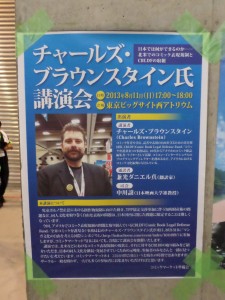 In 2010, thanks to the CBLDF’s efforts in a case involving regulation of violence in video games, the US Supreme Court acknowledged that the moral panic that crippled comics was a cultural mistake inconsistent with the constitutional traditions of the United States — a mistake that created real harm to free expression.
In 2010, thanks to the CBLDF’s efforts in a case involving regulation of violence in video games, the US Supreme Court acknowledged that the moral panic that crippled comics was a cultural mistake inconsistent with the constitutional traditions of the United States — a mistake that created real harm to free expression.
While the circumstances that led to the Comics Code and the current struggles for manga freedom are very different, it would be a tragedy to see regulation that resulted in hurting the industry, impairing the art form, and further reinforcing negative stereotypes about this important field across the world.
In the struggle for manga freedom, we are all participants. At CBLDF we work as thousands of enthusiasts to create better understanding of comics and manga. It is harder to censor what you understand and appreciate as art. Manga is an amazing form of art, and an amazing form of community. Let us all be participants in ensuring that its expression can continue to be free.
Thank you so much for your very kind attention.
Please help support CBLDF’s important First Amendment work by making a donation or becoming a member of the CBLDF!